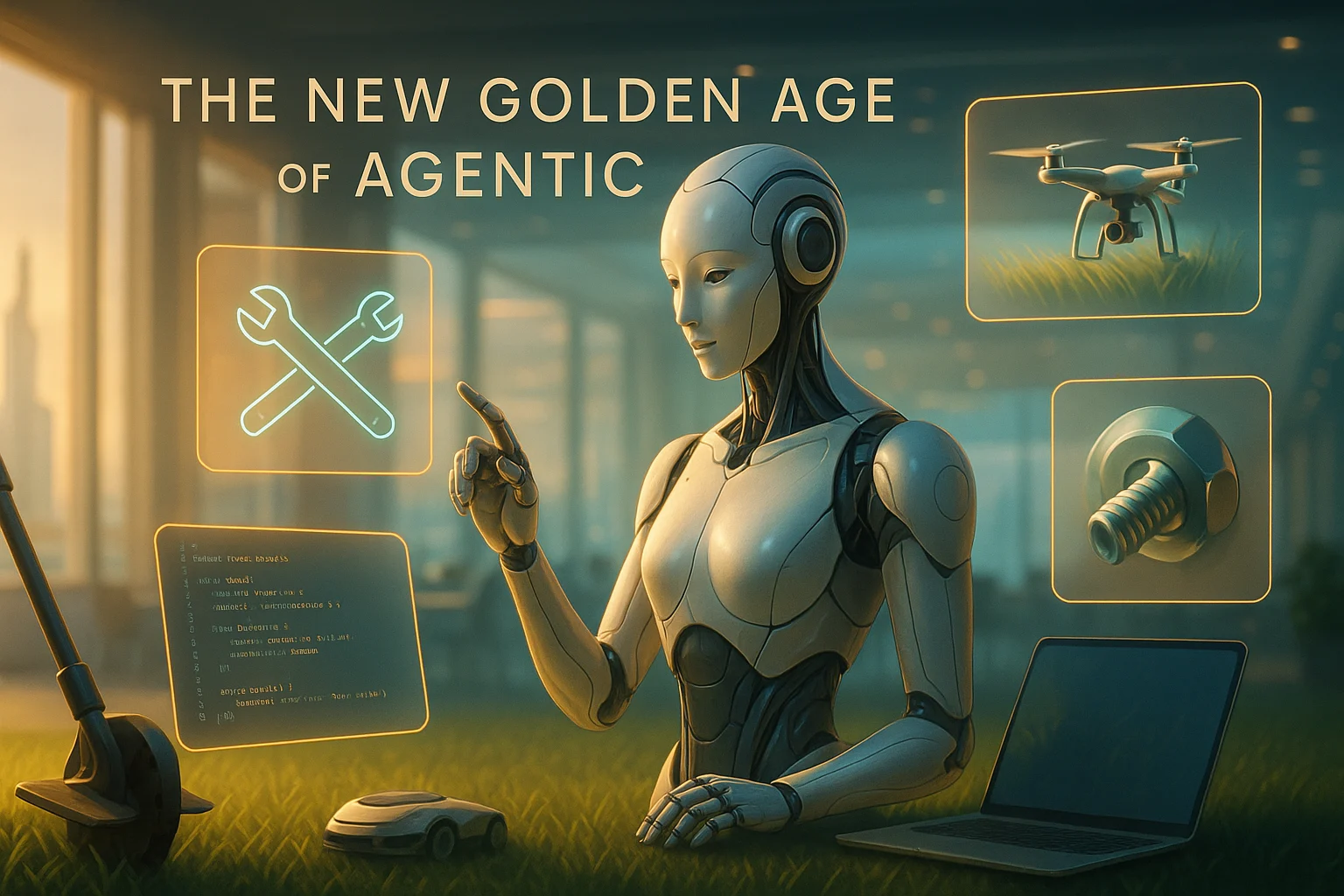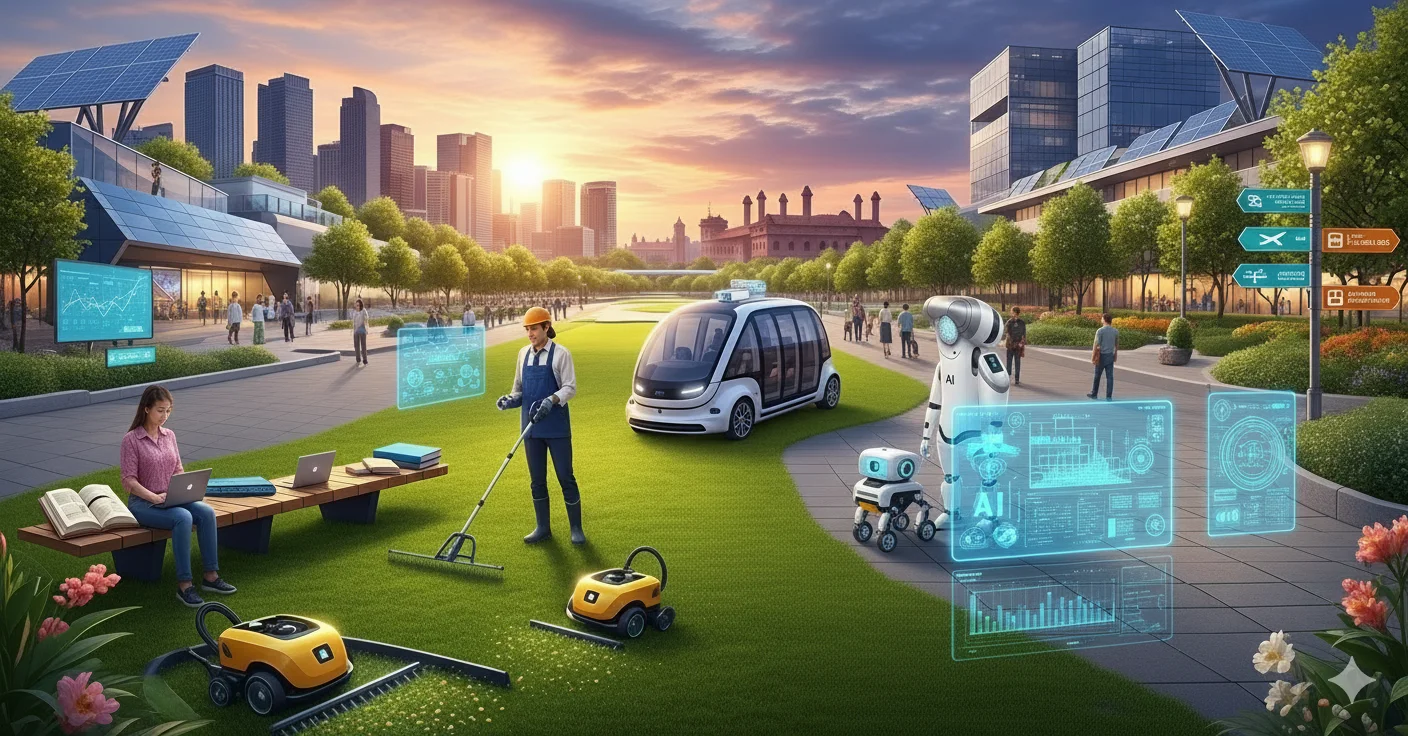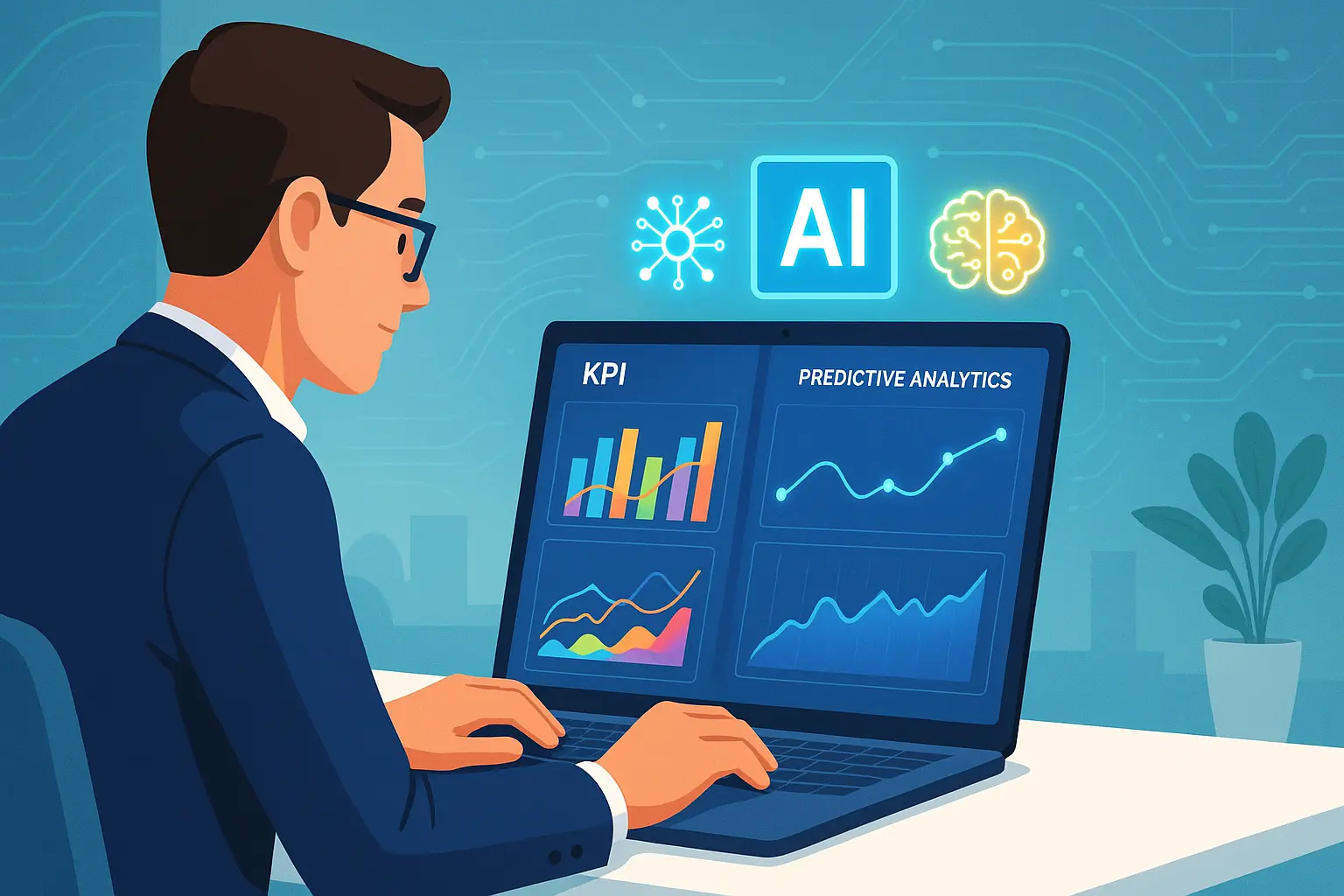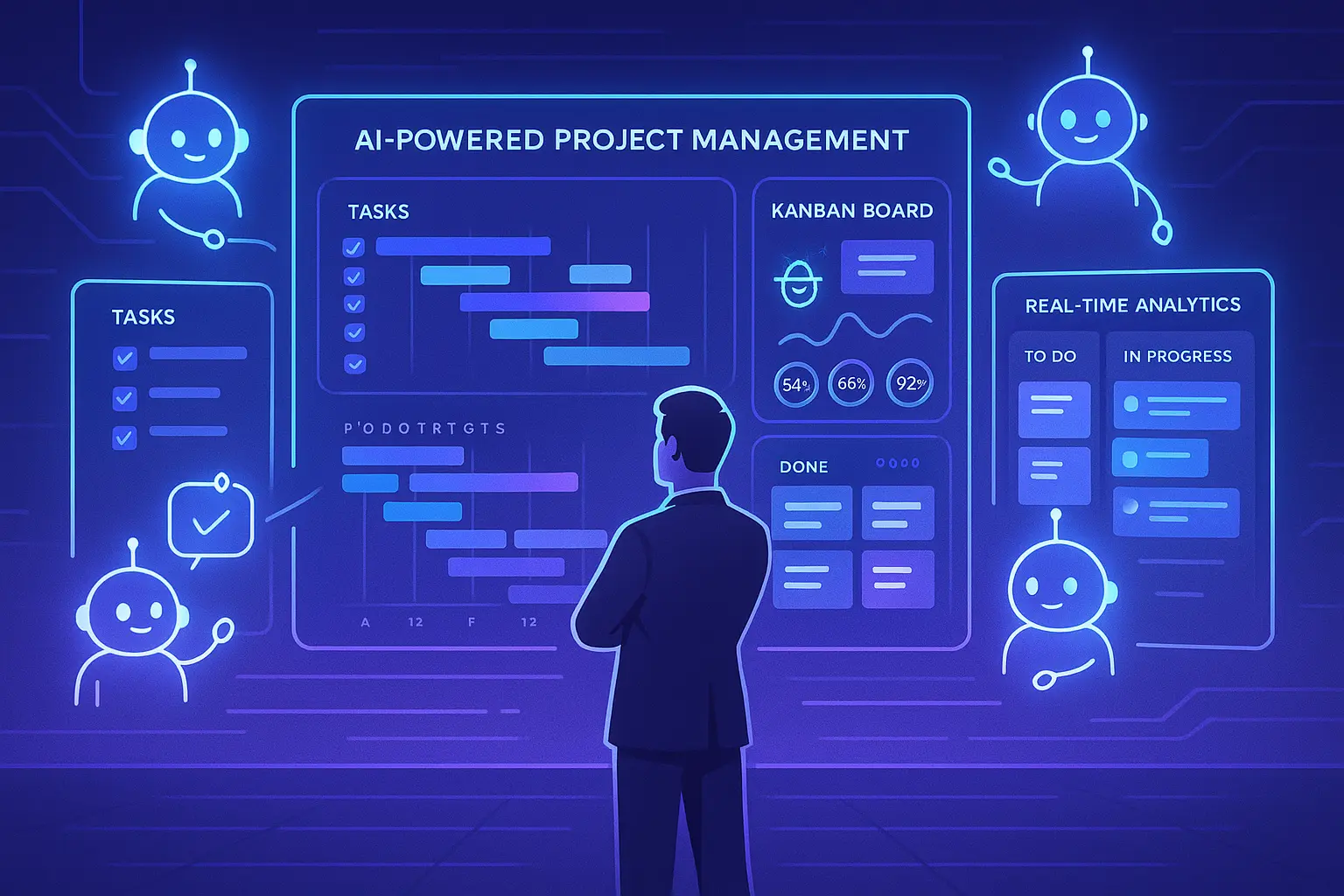Quick promise: this is a friendly deep-dive not just for coders and product people, but also for students, designers, photographers, and curious humans who want to peek at how ai tools are reshaping work, play, and the everyday. Expect practical tips, surprising ideas, and a few meta moments about creativity, ethics, and monetization.
1. Why this matters (and why you should care)
In 2025 the word tech is no longer shorthand for "computers", it's shorthand for how we think, create, trade, and connect. From a tool that helps you with paraphrasing a line in an email to a full agentic system that builds a prototype, the scale is staggering. This matters because the right tool can turn a small idea into a profitable stream, change a career, or unlock a whole new side hustle: whether you're a developer, a teacher, or a student.
This post will guide you through realistic workflows: how to use AI to generate videos, photos, presentations, and even code. We’ll talk about how creators can monetize content on platforms like youtube and how businesses can use generative models to replace boring work without cutting corners on quality.
But we’ll also be honest about risks: deepfake worries, copyright and plagiarism, censorship, detection, and what happens when AI-generated work interacts with taxes, law, and professional standards.
2. The toolbox: what to use for what
Think of your toolbag like a physical toolbox in your garage. For different tasks you need specific instruments: a crimping plier for cabling, a rivet or rivnut tool for metalwork, and a reliable knife for precision cutting. In AI-land it’s similar.
- Writing & editing: models like GPT or Claude for initial drafts; a paraphrase or paraphrasing tool for tone shifting; a human editor to remove errors and ensure plagiarism checks pass.
- Image and photo: photo editing tools, Adobe or open-source alternatives, plus generative image models for rapid ideation, but, keep an eye on detection.
- Video: tools to generate B-roll, auto-edit timelines, produce captions for accessibility, and render thumbnails in batch.
- Data & analysis: python scripts for scraping and analysis, spreadsheets for reporting, and SQL for large datasets.
- Hardware & makers: CNC mills, metal welding rigs, 3D printers; think of the real, physical tools, drill, wire strip, freewheel, brake caliper,you’ll still need them for hardware prototypes.
- Dev & infra: GitHub for version control, cloud platforms for deployment, container registries and continuous integration pipelines.
- Specialized: ArcGIS for spatial work, Mahindra fleets for industrial mobility, and domain tools like ArcPro or AutoCAD for engineering drawings.
For each class of tool, there’s a sweet spot where AI complements human skill: it accelerates repetitive parts of a job and frees you to focus on the creative, the judgmental, and the strategic.
3. Creative workflows that actually work (and make money)
Here’s a playbook that’s been battle-tested by creators, consultants, and companies launching in 2025.
Idea → Prototype → Content → Monetize
- Idea capture: Use a voice note app or a quick screenshot to capture inspiration. AI can summarize raw notes. If you’re working on a product with hardware, take a photo, annotate with AI, and ask for manufacturing suggestions.
- Prototype generation: For software, scaffold a repo with Copilot or similar. For visual ideas, draft layouts in Figma and use generative images as placeholders. For hardware, sketch a concept and use CAD templates.
- Content and SEO: Draft a blog and a presentation. Use AI to generate PowerPoint slides and helper images. Optimize titles and meta for CTR (click-through rate). Pro tip: blend storytelling with unexpected hooks, “Why Your Lawn Care Robot Will Be the Next Big Thing” or “The AI That Detects Brake Caliper Wear Before You Do.”
- Distribution and monetization: Export videos, seed them on YouTube, and turn clips into short-form videos for socials. Offer paid courses or code templates, or sell premium reports. Use affiliate links to tools like Toolstation or local hardware store listings for revenue.
- Feedback and iteration: Analyze engagement with analytics tools; use A/B testing on thumbnails; refine.
This workflow blends tools and human judgment. Some parts, like ensuring a tutorial is not violating safety guidance (e.g., instructions to remove a sharkbite fitting incorrectly), require human oversight.
4. A short primer on ethics, safety, and content limits
AI raises complex questions. Here's a compact checklist:
- Plagiarism & attribution: Always run important content through a plagiarism checker. AI can paraphrase, but if the source idea is unique, credit it.
- Deepfakes & image misuse: Avoid content that can be used for harm (fake medical advice, pornographic edits, or deceptive videos). If you’re doing face editing or face massage content, be transparent.
- Harassment, hate, and sensitive topics: Avoid generating content that’s satanic, haram, or discriminatory in a way that promotes harm. You can discuss such topics academically, but with caution and context.
- **Regulation and censorship: Platforms have rules. Some content may be not monetizable or have limits due to community standards.
- Privacy: Don’t publish identifiable patient data (e.g., pap smear kit images) or personal info without consent.
These limits are not just legal hair-splitting, they affect monetization, reputation, and the long-term viability of your project.
5. Niche case study: Lawn care automation and the “smart gardening” pivot
This is where I mix gardening, hardware, AI, and local services. Imagine a product: a small robot that helps with edging, weeding, and measuring lawn health.
- Sensors detect soil moisture, and an AI model suggests a watering schedule ("shut off water after 10 minutes if soil saturated"). It can even schedule an appointment "near me" with local gardening services.
- Integrations: cloud app for firmware updates; a rental option at a nearby store or Toolstation; local shops could offer maintenance.
- Safety: hardware must avoid ladder work, and blade cutting must be enclosed. Emergency brake caliper-like failsafes physically disengage blades.
Why it’s profitable: subscriptions for data, per-job scheduling, and partnerships with hotels, airports, or parks. Imagine a chain of hotels paying for automated lawn checks outside conference rooms. Niche, but real.
6. How students and freshers should approach AI in 2025
If you’re in university, a freshers cohort, or preparing for jee/exams, AI is an accelerator, not a shortcut.
- Use AI for summarizing long readings, generating practice quizzes, and creating sample code, but write the final answers yourself.
- Learn python for scripting, data science, and automation. It’s the lingua franca.
- Build a portfolio: small projects, GitHub repos, and a few videos showing what you made.
- For interviews, demonstrate problem solving and explain your decisions, not just the output of an AI.
Don’t rely on AI to pass exams dishonestly. Many universities use detection tools; your registration could be at risk if caught.
7. Practical tech recipes (short, useful, and actionable)
Here are quick, practical "recipes" you can try this week.
A. Turn a blog into a monetized course
- Pick a high-CTR topic (e.g., “AI for Small Hardware Startups”).
- Write a 2,000-word blog, then use AI to expand it into five lesson outlines.
- Record short videos (5–10 minutes), transcribe with AI, and auto-generate slides.
- Host on a course platform and promote via an email list and youtube snippets.
B. Use AI to automate photography editing
- Use RAW files, batch-run a script to auto-enhance exposure.
- Generate alternate thumbnails with an image model.
- Publish to a gallery site; tag with keywords (SEO).
C. Quick deployment for an AI web app
- Scaffold with a template on GitHub.
- Connect to a managed LLM API, ensure login and rate limits.
- Add analytics and A/B test the landing page.
D. Hardware maintenance assistant
- Use a simple app where a technician uploads a photo of a brake caliper, the AI highlights wear zones and suggests replacing pads. Integrate with parts store inventory for seamless ordering.
8. Monetization paths that actually convert
- Advertising: Still valid for high-volume content, but ad revenue is fickle.
- Subscriptions: People pay for recurring value, product updates, premium datasets, or exclusive reports.
- Course sales & workshops: The DIY audience is huge.
- Services: Offer a data-cleaning or automation product for SMEs.
- Affiliate: Recommend tools, components from Toolstation, or hardware parts (e.g., rivet, rivnut, batteries, goggles) and earn commissions.
- Sponsorships: For niche series, e.g., an “AI for Lawncare” tutorial sponsored by a Mahindra utility vehicle dealer.
If you’re building on youtube, be aware of the monetized rules; not all content is allowed, and automated content that’s low-value may be demonetized.
9. Jobs and careers: what’s hot, what’s safe
Hot roles
- ML engineers and software engineers who can productionize models.
- Prompt engineers and AI product managers (these are maturing beyond the label).
- DevOps & MLOps folks for scalable deployment.
- Designers who combine visual craft with generative tools.
- AI ethics and compliance experts.
Safe bets
- Engineers who can write robust code, understand testing, and integrate systems will be in demand.
- Healthcare, law, and financial domains need domain expertise plus field-specific AI knowledge (e.g., understanding taxes, medical data standards).
Upskilling
- Learn python, cloud fundamentals (AWS/GCP/Azure), and practical tools like Git, Docker, and ArcGIS if you want spatial work.
- Soft skills: presentation, product thinking, and the ability to explain complex systems simply.
10. The dark corners: what to watch out for
- Content detection: Tools are getting better at spotting AI-generated content. If you’re publishing content for academic or legal settings, be cautious.
- Platform censorship and rules: A video that mentions sensitive topics like haram, satanic, or other flagged keywords may face restrictions. Context matters.
- Regulatory risk: New rules around AI (transparency, provenance) may require labeling content as AI-generated.
- Security: Agentic systems that execute actions (e.g., automating payments or publishing posts) need robust auth, login security, and rate limits.
11. Tools I’d personally recommend (categories, not brands)
- Text generation: Use high-quality LLMs. Layer a detector and human editorial pass.
- Image generation: Use models that provide licensing clarity. Avoid illegal or harmful content.
- Audio & editing: Use tools that can separate voice tracks and export stems.
- Data: Use robust ETL pipelines and prefer transparent, auditable data sources.
- Collaboration: Figma for design, shared Git repos for code.
- Hardware: Buy calibrated tools; if you’re doing mechanical work, invest in proper goggles, gloves, and a steel toolbox.
12. Frequently asked questions (short & practical)
Q: Are AI tools replacing jobs?
A: They change jobs. Repetitive tasks are automated; judgment, ethics, and relationships remain human. Pair AI with human oversight.
Q: How do I avoid plagiarism?
A: Use plagiarism detector tools, cite sources, and add original analysis.
Q: Is content about sensitive topics allowed to be monetized?
A: It depends. Some topics are restricted. Always review platform settings and policies.
Q: Can I build hardware with AI alone?
A: No. AI helps with design and simulation, but real-world testing and mechanical skills, welded joints, crimping techniques, and safe battery handling, require human expertise.
13. Weird but workable ideas (high curiosity, high CTR potential)
- AI-augmented landscaping reviews: a site offering quick AI assessments of front-yard curb appeal. Could integrate with local tool rentals and gardening services.
- Brake caliper health checks for used car marketplaces: sellers upload photos, AI highlights wear, buyers pay for a verified report.
- Airport-to-hotel routing assistant: a localized app that helps travelers find the nearest hotel, restaurants, and taxi ranks, including live toll plaza fees or nearest metro station info.
- DIY kit shop that bundles parts and AI-guided assembly videos, everything from caulking walls to replacing a freewheel or rivet install.
These are niche ideas that attract clicks and can be monetized with affiliate links, local partnerships, or subscription services.
14. SEO, CTR, and the secret sauce of headlines
People click on curiosity and promise. A few headline patterns that work:
- “I Tested 10 AI Tools and This One Saved Me 10 Hours a Week”
- “How To Turn Your Weekend Project Into a $1,000/Month Side Hustle”
- “The Secret AI Trick for Perfect Lawn Edging Every Time”
Combine numbers, specificity, and a human hook. Use a strong thumbnail for videos, humans respond to faces, action, and simplicity.
15. Legal, taxes, and the money side
If you earn, you’ll owe taxes. Keep records, invoices, and consult a financial pro about how AI-generated content income is taxed. If you run a company selling products or services, ensure your registration and local compliance are in order.
16. A note on global, cultural, and religious contexts
In some cultures certain subjects are taboo or regulated, content considered haram or harmful could affect monetization and platform standing. Be mindful and respectful; provide balance and educational tone if you cover sensitive subjects.
17. Tools, shops, and local resources (practical)
If you’re building physical stuff, visit a Toolstation, store, or hardware shop near you. Many cities in 2025 have maker spaces with 3d printing, CNC, and electronics benches. Universities often have resources too, check the engineering department.
18. How to stay safe when exploring
- Use a separate login for shared services; avoid mixing personal and project accounts.
- Keep a backup of key logs and version your code.
- If working with images of people, get written consent and remove sensitive metadata.
19. Final checklist to launch a small AI-enhanced product in a month
- Idea validated by 10 potential users.
- Minimal viable prototype (MVP), web or simple hardware mock.
- Landing page and email capture.
- One blog post with SEO-optimized title.
- A short marketing video and social snippets.
- Monetization plan (affiliate, subscription, product).
- Compliance and policing plan for content safety.
- Basic bookkeeping and registration if needed.
20. The future: what 2026 might look like
Expect AI to be integrated, not an add-on. That means every product will likely have some automated element: image generation for marketing, automated summaries in documentation, and smarter diagnostics in hardware. New jobs will appear at the intersection: designer + promptsmith, ethics auditor, and model ops engineer.
We’ll also see more regulation, so products that build provenance (who created what, who edited it) will have an advantage. Companies that treat AI like a collaborator, not a magic broom, will win.
Closing: the most important thing to remember
AI is a tool, immensely powerful, but only as good as the people who wield it. Whether you’re learning python, building a lawn-care robot, or starting a youtube channel, focus on creating true value. Care about quality, ethics, and the user. That’s what turns curious clicks into long-term customers.
If you want, I can help you turn one of the niche ideas above into an actionable 30-day plan: packaging, required tools, budget, and a launch checklist. Go ahead, pick one. Or tell me what tools you already have in your garage, and we’ll design something real.



